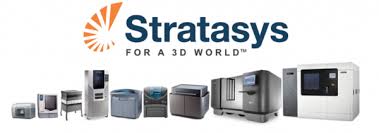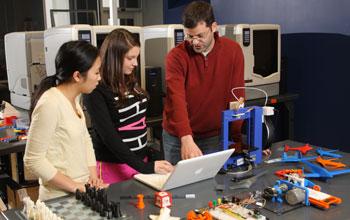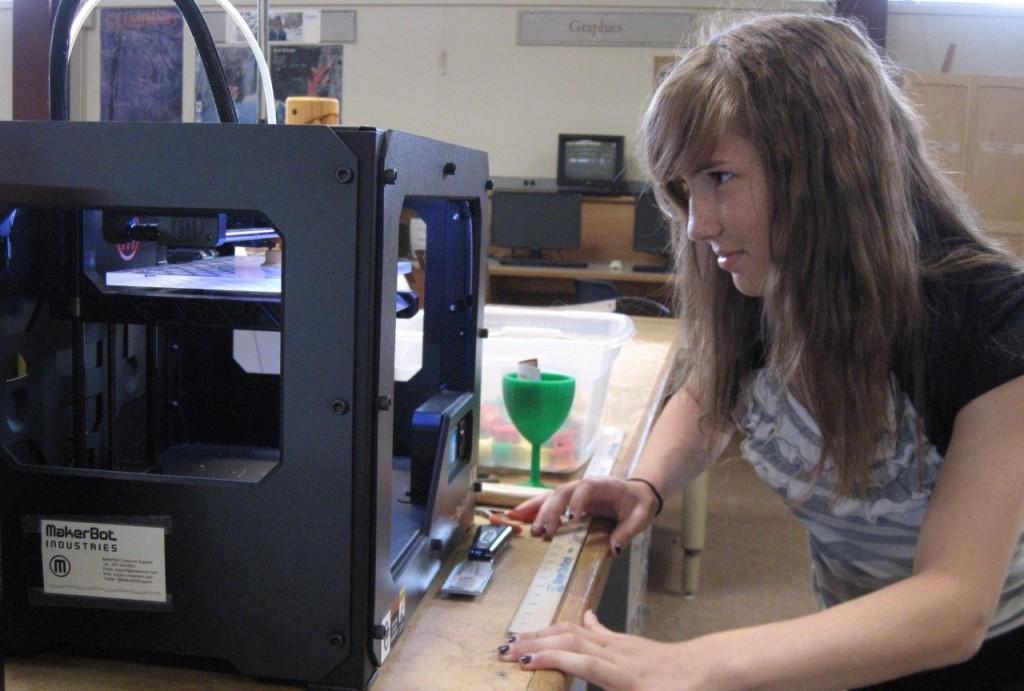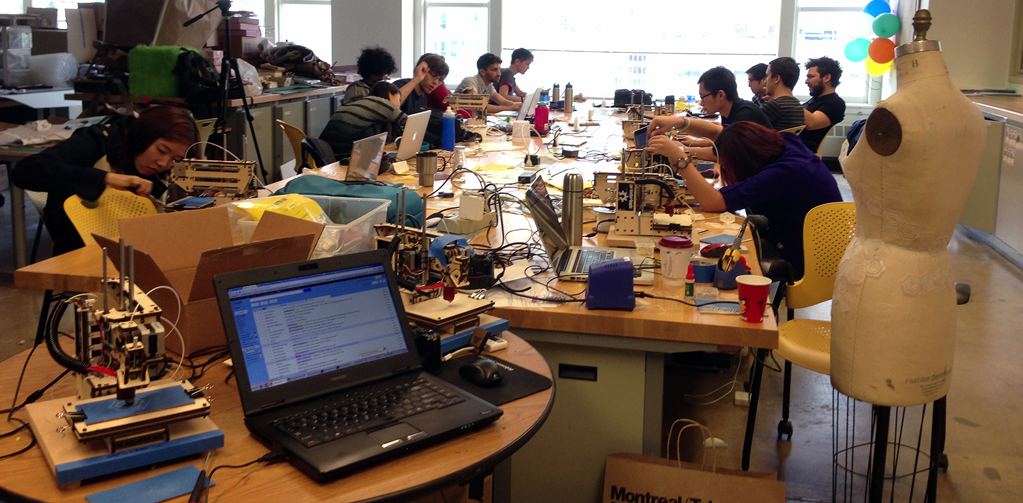Stratasys’ New Free 3D Printing Curriculum Challenges Students to “Make Something that Moves Something”
 When everyone started using computers to surf the Internet, there was a huge demand for computer classes in middle and high schools, community colleges and universities, and even senior centers. The same goes for 3D printing moving forward. We’ve heard a lot about its educational potential, where people can participate in the design, manufacture, and assembly of items like never before. This new technology has incredible implications for classrooms of young and adult learners, but exactly how do you introduce 3D printing to a new generation of students?
When everyone started using computers to surf the Internet, there was a huge demand for computer classes in middle and high schools, community colleges and universities, and even senior centers. The same goes for 3D printing moving forward. We’ve heard a lot about its educational potential, where people can participate in the design, manufacture, and assembly of items like never before. This new technology has incredible implications for classrooms of young and adult learners, but exactly how do you introduce 3D printing to a new generation of students?
The ball on curriculum is starting to roll thanks to 3D printing giant Stratasys‘ newly released 3D  printing technology course curriculum that focuses on fields being transformed by the technology. “Introduction to 3D Printing: From Design to Fabrication” is a free, downloadable, full-semester, 14 week course, which includes a guide, presentations, STL files of 3D models, and grading support.
printing technology course curriculum that focuses on fields being transformed by the technology. “Introduction to 3D Printing: From Design to Fabrication” is a free, downloadable, full-semester, 14 week course, which includes a guide, presentations, STL files of 3D models, and grading support.
Course content includes a range of historical, economic, and practical information including: history of manufacturing; pros and cons of 3D printing’s current industrial applications; real-life scenarios that teach appropriate usage of the technology; cost-reduction strategies; economic implications; and design and 3D printing of objects not requiring assembly.
Shelly Linor, Stratasys’ Director of Global Education, noted their drive to create the new curriculum:
“We notice a strong demand coming from the industry for a curriculum focusing on 3D printing. Educators around the world now have an opportunity to make a big impact by using and contributing to our curriculum. They will also be able to better prepare their students for future careers as 3D printing is becoming an intrinsic part of the design and manufacturing processes in leading companies.”
Students utilizing Stratasys’ new curriculum will get hands-on experience as they create 3D printing projects from start to finish. The “Make Something That Moves Something” theme will be exemplified through projects intended to highlight the entire process involved in 3D design and printing for functional finished pieces with moving parts.
The theme moves the whole idea of hands-on, experiential learning to a higher level. It is widely acknowledged that people learn best by doing, and teachers of all levels are exhorted to incorporate group work, tactile projects, and process-focused learning into curricula planning. 3D printing technology provides all of these things, and US- and Singapore-based schools have already started to use this curriculum, reporting successful results.
 Stratasys’ Education division has made the course curriculum very accessible, and it is organized into a course overview section, structure section, and it includes 14 + units overall — with 4-6 class or lab hours weekly. The first set of units cover an overview of 3D printing, mesh, closed gear systems, dynamic surfaces and chains, and the future of fabrication. The next set of units covers 4D printing, parametric design, prototyping, printing and testing, and final presentations. The curriculum also includes extra units, covering sound printing, fluid dynamics, post processing, the manufacturing of tomorrow, and it even includes a unit on manufacturing regulations and carbon footprints.
Stratasys’ Education division has made the course curriculum very accessible, and it is organized into a course overview section, structure section, and it includes 14 + units overall — with 4-6 class or lab hours weekly. The first set of units cover an overview of 3D printing, mesh, closed gear systems, dynamic surfaces and chains, and the future of fabrication. The next set of units covers 4D printing, parametric design, prototyping, printing and testing, and final presentations. The curriculum also includes extra units, covering sound printing, fluid dynamics, post processing, the manufacturing of tomorrow, and it even includes a unit on manufacturing regulations and carbon footprints.
It appears Stratasys Education has left no stone unturned, but like all curricula on a rapidly changing topic, it will no doubt be polished by its users as it becomes time-tested. Perhaps the best aspect of the curriculum is its focus on job preparation, as Stratasys focuses on careers in emerging fields where 3D printing plays a major role. The new curriculum is set to provide a solid foundation in 3D printing that can help students approach their career paths equipped with classroom and practical experience.
The future of 3D printing can only be improved with an educated public that knows how to apply the technology in practical and occupational settings. Stratasys’ “Introduction to 3D Printing: From Design to Fabrication” is an excellent addition to 3D printing education. It’s exciting to imagine what future generations will invent, as 3D printing, for them, may become as common as texting and blogging has become for us!
What do you think about this new curriculum? Is it something you’d like to see spread through schools? Let us know what you think about practical 3D printing education in classroom settings in the Stratasys Curriculum forum thread over at 3DPB.com.
Subscribe to Our Email Newsletter
Stay up-to-date on all the latest news from the 3D printing industry and receive information and offers from third party vendors.
You May Also Like
Printing Money Episode 17: Recent 3D Printing Deals, with Alex Kingsbury
Printing Money is back with Episode 17! Our host, NewCap Partners‘ Danny Piper, is joined by Alex Kingsbury for this episode, so you can prepare yourself for smart coverage laced...
Insights from Cantor Fitzgerald on AM’s Q1 2024 Landscape
A recent survey by Cantor Fitzgerald sheds light on the persistent challenges within the additive manufacturing (AM) industry in the first quarter of 2024. Based on responses from 38 industry...
3D Printing Financials: Xometry’s Scaling up and Strong Start to 2024
Xometry (Nasdaq: XMTR) kicked off 2024 with strong results, boosting its marketplace and technology to new heights. Both revenue and gross margin soared, fueled by an expanding global network of...
3D Printing Financials: Desktop Metal Targets Recovery Amid Net Losses and Revenue Downturn
Despite facing a decline in revenue and the persistent challenges of a tight economic climate, Desktop Metal (NYSE: DM) is making strides toward operational efficiency. The first quarter of 2024...

































